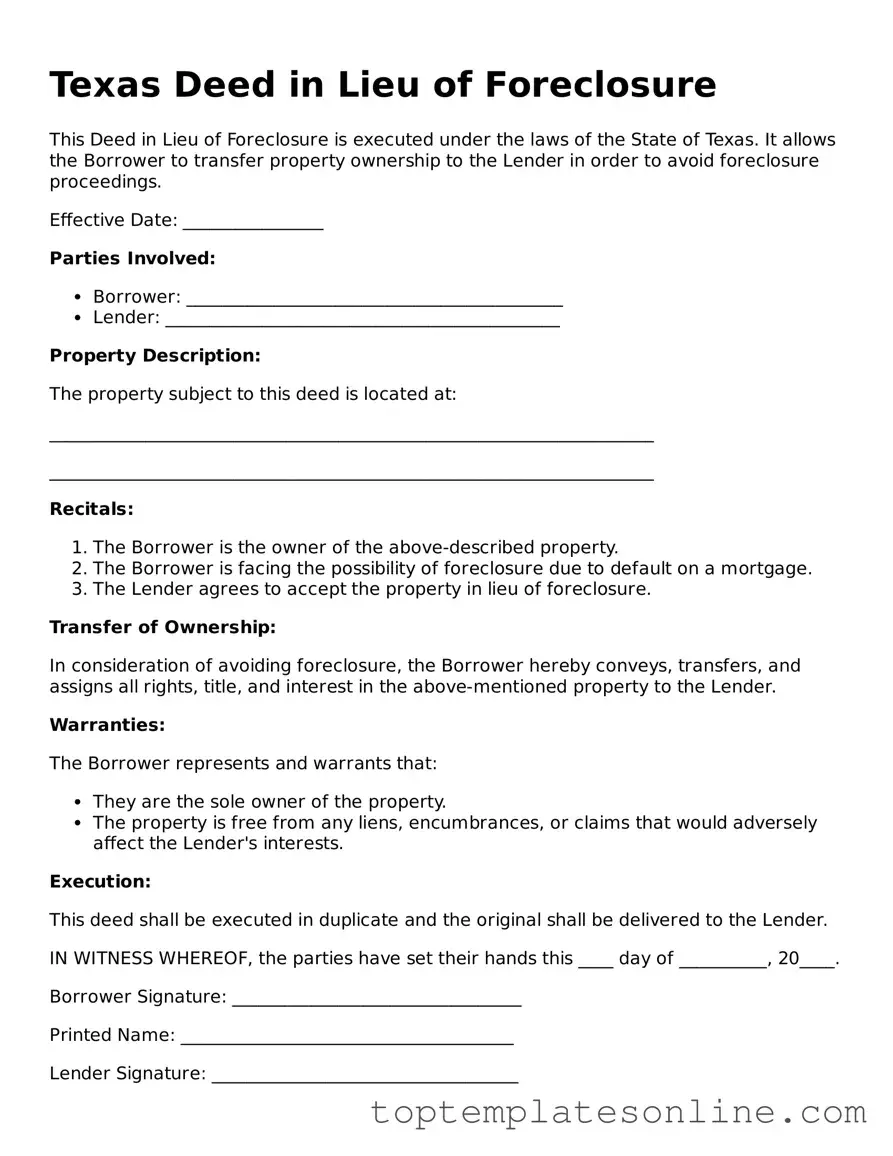Blank Deed in Lieu of Foreclosure Template for Texas State
A Texas Deed in Lieu of Foreclosure is a legal document that allows a homeowner to transfer their property title to the lender to avoid foreclosure. This process can provide a smoother exit for the homeowner while helping the lender recover their investment. Understanding the implications and requirements of this form is essential for anyone facing financial difficulties with their mortgage.
Customize Deed in Lieu of Foreclosure Here
